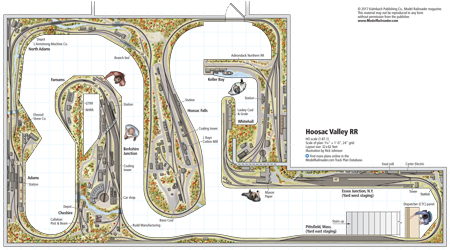
Name: Hoosac Valley RR Layout owner: Dick Elwell Scale: HO (1:87.1) Size: 32 x 62 feet Prototype: freelanced, inspired by New York Central and Boston & Albany Locale: Northeast Era: 1940s to 1960s Style: walk-in Mainline run: 365 feet Minimum radius: 42″ (main line) Minimum turnout: no. 6 (one no. 4 turnout) Maximum grade: 1.5 […]
Read More…
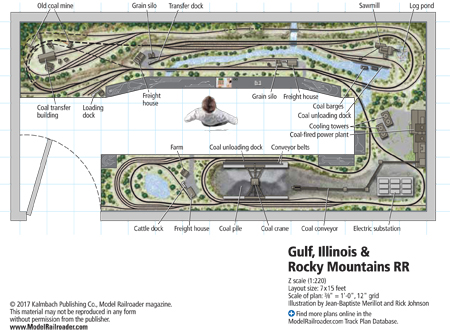
Click the image to download a copy of the track plan. Name: Gulf, Illinois & Rocky Mountains RR Layout owner: John-Baptiste Merillot Scale: Z (1:220) Size: 7 x 15 feet Prototype: none; includes locomotives from Union Pacific, CSX, Canadian National, Canadian Pacific, among others Locale: Northwestern United States Era: late 1960s to present Style: walk-in, […]
Read More…
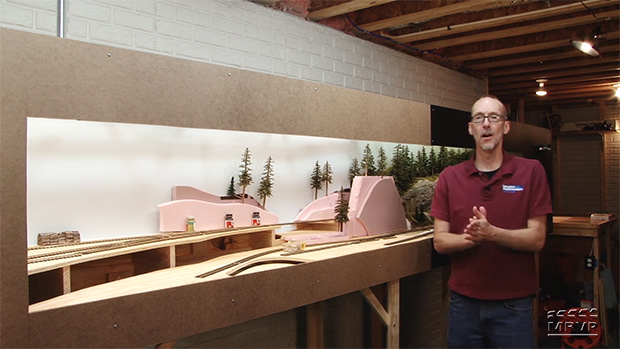
Having trouble viewing this video? Please visit our Video FAQ page David is eager to get out of the basement and enjoy the summer weather! But before heading into the great outdoors, he’s bound and determined to sort out a few track, scenery, and benchwork issues on the expanding Olympia Logging Co. On30 layout. […]
Read More…
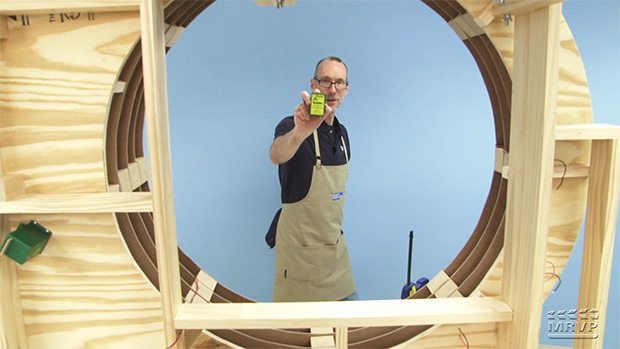
Having trouble viewing this video? Please visit our Video FAQ page Popp. David Popp. That’s who we’ve got (Mr. Bond wasn’t up to the task) to demonstrate how to position, align, and connect the Tortoise switch machines used with the turnouts of our N scale Canadian Canyons project layout. Don’t miss his not-so-secret agent […]
Read More…
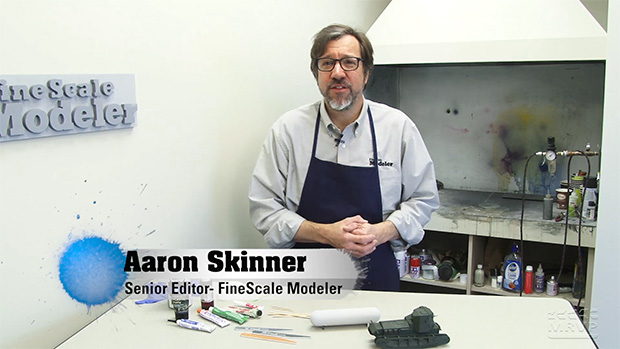
Having trouble viewing this video? Please visit our Video FAQ page In this episode of Airbrushing with Aaron, FineScale Modeler senior editor Aaron Skinner fills you in on tips and techniques you can use to fix minor flaws and gaps in a model’s surface, before applying paint. […]
Read More…
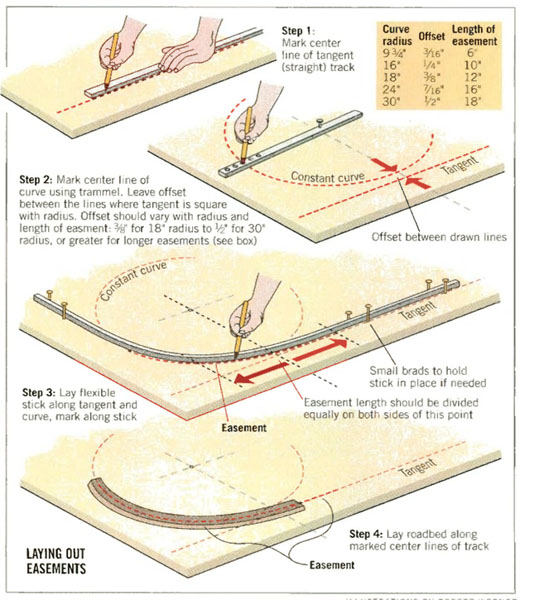
Laying tangent (straight) track is pretty straightforward but those curves can, well, throw you a curve. Equipment that enters a sudden curve is more likely to derail. And even if wheels stay on the rails the sight of a train jolting into a sudden curve can make even the most realistic layout look like a […]
Read More…

Having trouble viewing this video? Please visit our Video FAQ page David is back to the basement for more work on the Olympia Logging Co. On30 layout. In this blog entry, he first joins the two layout sections, and then makes changes to the hardboard fascia and styrene backdrop, giving the display an amazing […]
Read More…
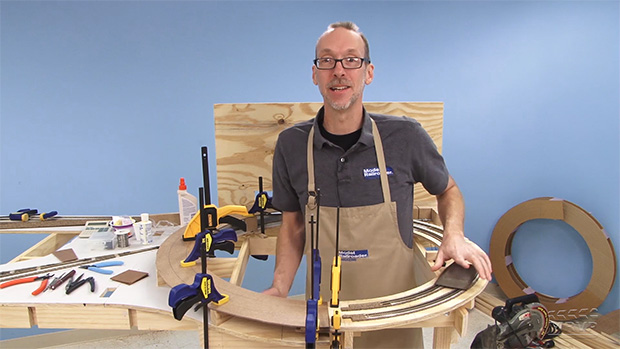
Having trouble viewing this video? Please visit our Video FAQ page With the helix of our N scale Canadian Canyons project layout spirals upward, David Popp now shows how to install the cork roadbed and flextrack as he works along the incline. […]
Read More…
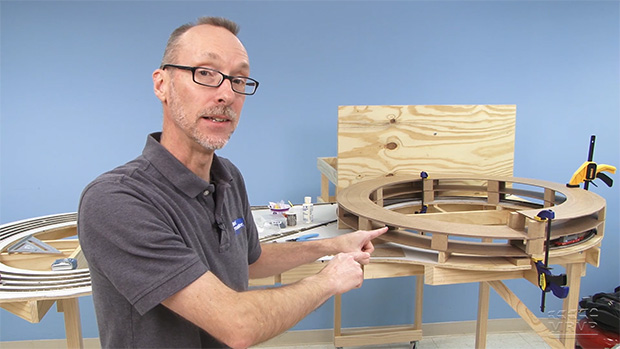
Having trouble viewing this video? Please visit our Video FAQ page Our N scale project railroad is relatively small, but a helix is still a perfect space-saving, mainline-extending feature to include! In this installment of the Canadian Canyons series, David Popp first shares the key design considerations. He then jumps right into demonstrating the […]
Read More…
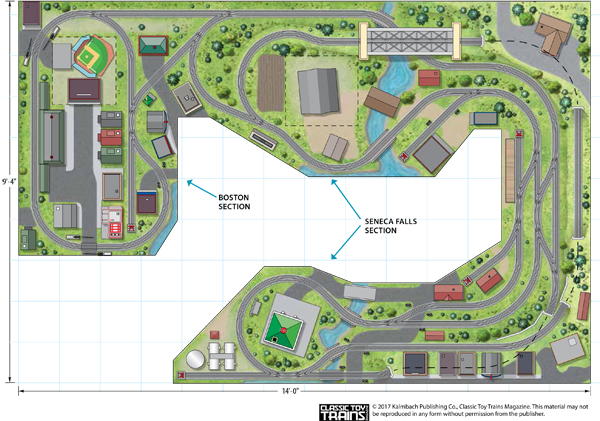
A client asked me to develop a track plan for him that focused on two of his non-train collecting interests: The movie It’s A Wonderful Life, and the Boston Red Sox Major League Baseball club. An odd pairing you think? Not really. What are most toy train layouts but a salute to nostalgia and personal […]
Read More…
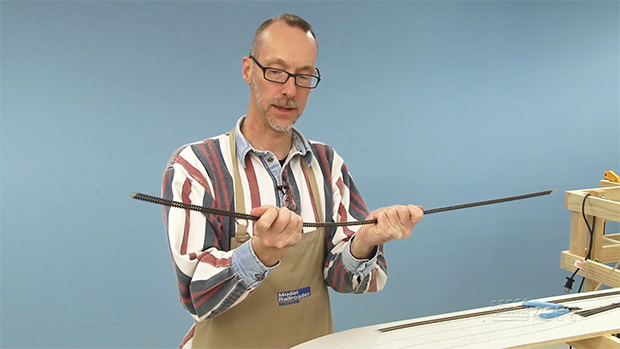
Having trouble viewing this video? Please visit our Video FAQ page Trackwork continues on our N scale project railroad. In this installment of the ongoing Canadian Canyons series, David Popp shares techniques for laying down more sections of flextrack, specifically around the curves of the staging yard. […]
Read More…
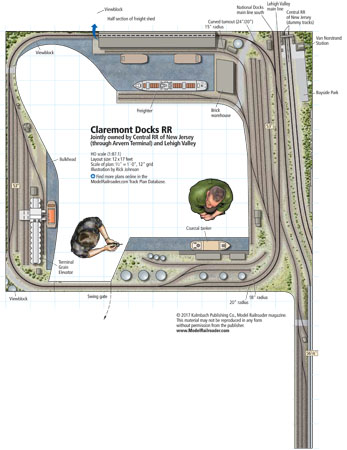
Name: Claremont Docks RR Layout owner: Howard R. Lloyd Scale: HO (1:87.1) Size: 12 x 17 feet Prototype: freelanced, inspired by Lehigh Valley Locale: Jersey City, N.J. Era: September 1944 Style: walkaround Mainline run: 39 feet Minimum turnout: no. 4 Minimum radius: 18″ Maximum grade: 3 percent Benchwork: open grid and L-girder Height: 53″ to […]
Read More…












